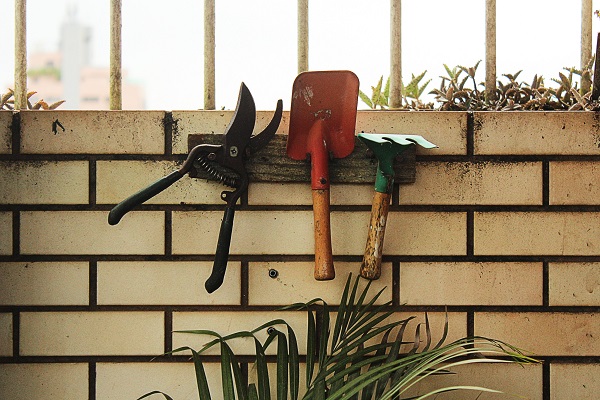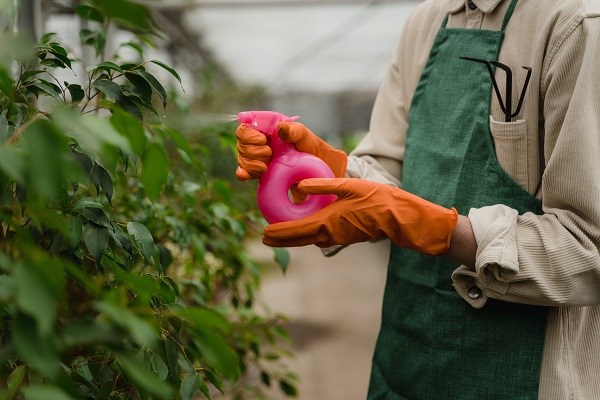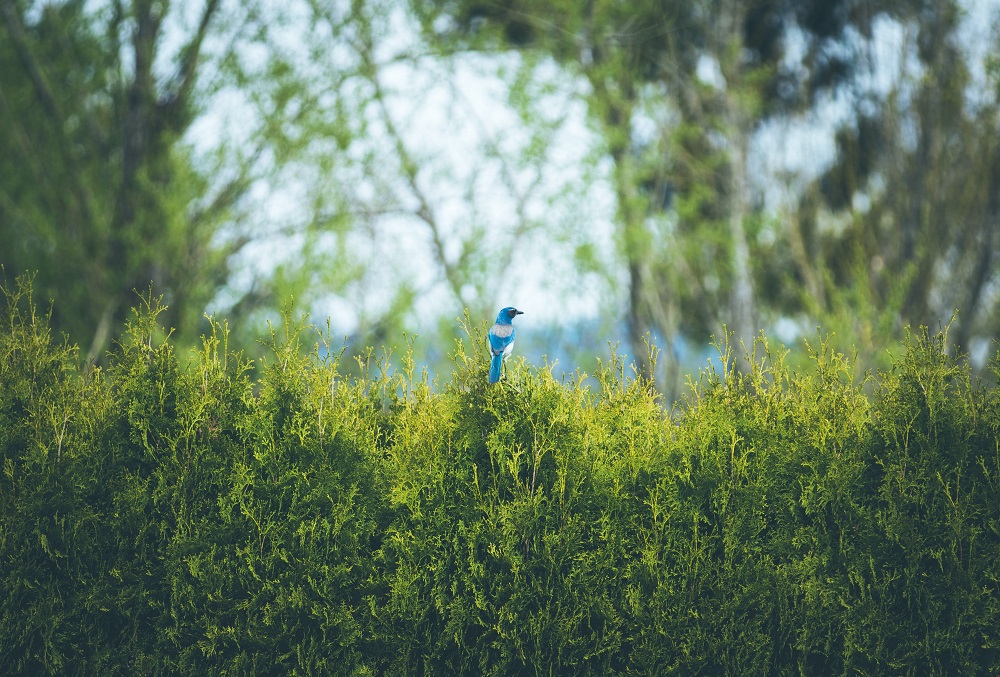Getting rid of weeds around shrubs is essential for two important reasons. First, the weeds will compete with the shrubs for the vital nutrients and moisture necessary for their development. Second, an infestation of weeds in your garden can destroy the aesthetic appeal of shrubs.
Therefore, you are doing your garden a lot when you get rid of weeds around your shrubs immediately you notice them. Fortunately, getting rid of weeds around shrubs is not a difficult task. And you can do it without harming the shrubs.
In this article, you will learn how to get rid of weeds around shrubs effectively. In both small and large gardens without affecting the shrubs. And make your garden of shrubs beautiful and healthy again.
Natural Ways to Get Rid of Weeds Around Shrubs
Hand method
Hand pulling of weeds is practical for getting rid of small weeds around shrubs. This old-fashioned way of getting rid of weeds is still a reliable solution to date. Add it to your gardening routine tasks or remove them immediately you notice them.

It is not a difficult thing to do unless you have a problem bending or kneeling. Make sure to wear gardening gloves for protection against infections and diseases.
Weed removal by hands becomes practically impossible when you are dealing with large weeds. You may need to make use of a weeding tool or weed killer.
Weeding tool
For easy and quick removal of weed, try a weeding tool. Weeding tools comes in different styles to remove weeds. When shopping for a weeding tool for your garden of shrubs, ensure to consider the type of weed growth around your shrubs before making a selection.
For instance, a stand-up weeder is best for removing crabgrass or dandelion. Dandelion or crabgrass are deeply rooted plants that can be difficult to remove, but the stand-up weeder makes it easy.
Place the stand-up weeder over the weed you want to remove, thrust it down with your feet, tilt it and uproot the weed. With this tool, you can remove weeds over a large area without back strain.

For young weeds, try a winged weeder. The hula hoe comes in handy to remove weeds with shallow roots. If you want to deal with weeds in a small garden, the short-handled weeders come in handy.
For a large garden, long-handled tools are preferable. It helps with the quick removal of weeds without causing backache. When shopping for a weeding tool, consider its durability and ease of use.
Using post-emergent herbicides to get rid of weeds around shrubs
Post-emergent herbicides are also effective for weed removal around shrubs. However, there are things you should know about post-emergent herbicides before you purchase one. There are two main types of post-emergent herbicides; selective herbicides and non-selective herbicides.
The selective herbicides only target the weeds and do not affect the healthy living plants around them.
That means knowing the type of weeds or grass growing around your shrubs. And then finding the apt selective herbicide that can kill the weeds without killing the shrubs even if the herbicide accidentally contacts it.
There are such herbicides in the market, but we recommend ORTHO grass and garden killer.
ORTHO GRASS B CON
Ortho weed killer is effective for killing weedy grasses without damaging ornamental plants. There is no mixing required. It is ready to use selective herbicide. You can use it to get rid of weeds around shrubs, plant beds, and trees.
It is effective for killing most annuals and perennials grasses. They include crabgrass, foxtails, goosegrass, panicgrass, Bermuda grass, and Quack grass. However, it is not effective for broadleaf weeds or sedges.
Not all plants are tolerant to this selective herbicide. So, if you have any other plants asides from ground cover, shrubs, flowers, and shade trees near to the weeds, you want to apply extreme caution when spraying. Make sure you direct the spray to the weeds. Also, spray when the air is calm. This will help prevent the spray from drifting onto the intolerant plants.
This weed killer can help eliminate weeds around shrubs without harming your shrubs. If there is accidental contact with the desirable plants, watch the plants with water immediately.
Non-selective or contact herbicides
Unlike selective herbicides, contact herbicides eliminate every plant in its path. It can’t differentiate between desirable plants and weeds.
Can you use contact herbicides around your shrubs? Yes. You can safely use Contact herbicides around flower beds and shrubs. A contact herbicide is a good choice if you want to eliminate the hassle of finding the apt selective herbicide that can kill the weeds without hurting your ornamental plant.

However, you have to apply extreme caution. Direct the spray around the base of the shrubs, away from the foliage of the healthy living plants. If the herbicide accidentally contacts the desirable plants, wash it off with water immediately.
The best time to spray the weeds is when the weather is calm to avoid the spray drifting onto the desirable plants. Different non-selective herbicides can help clear weeds around shrubs, but we recommend the Roundup Ready-To-Use Extended Weedkiller.
Natural methods to get rid of weeds around shrubs
Vinegar
Diluted vinegar can work wonders for your shrub garden. Just one drawback, vinegar is not selective. It can kill any plant it contacts. Like the contact herbicides, vinegar can’t differentiate between desirable plants and unwanted plants too.

That means you need to apply caution when using diluted vinegar as a weed killer. Instead of buying a ready-to-use industrial-grade Vinegar. You can prepare the solution at home by following the simple steps below:
Simple steps to make vinegar a weed killer
- Pour four-part vinegar with one-part vinegar in spraying spray bottle
- Add baking soda
- Mix properly and start spraying
Boiling water
Boiling water comes in handy to kill weeds around a small garden of shrubs. Instead of spraying chemicals or pulling them with a hand or a weeding tool, pour hot water over the weeds. It works efficiently.
This method is environmentally friendly, inexpensive, and requires a little effort to remove weeds around shrubs. The hot water can kill the weed down to the root. However, according to the University of California integrated pest management program, hot water for weed killing is effective for small weeds, young annual weeds like broadleaf weeds, or young perennials, but are not very efficient for established perennial weeds and woody plants. If you are dealing with large clumps of weeds, consider cutting down the weeds a bit before applying the treatment.

That will allow the hot water to get to the deep taproots easily. Mind you, boiling water kills everything in its path, so you want to be careful when applying the hot water to the weeds. Try not to make the water touches the desirable plants.
Salt
Sodium chloride is the salt for killing weeds around shrubs. Epsom salts, rock, or sea salt are not efficient for this purpose. However, salt for weeds control is best applicable for a small-scale garden.
When using salt as your natural herbicide to eliminate weeds growing around desirable plants, make sure the water is stronger than the salt, a mixture of 2:1.
You can pour the mixture on a spray bottle or apply it directly from the container. When spraying the salt solution, make sure it does not touch the shrubs. That will help prevent it from killing them. Sodium chloride is not just toxic for weeds. It is dangerous to all plants. Besides, the salt can leach into the soil and affects its health.

Even though salt acts as a natural solution for weeds elimination, it is must be applied with extreme care to prevent it from damaging surrounding plants or the soil. However, if it accidentally drifts onto the desirable plants or soil, wash away with a good amount of water.
5 Ways to Prevent Weeds Around Shrubs
Mount headers around the shrubs
Mounting headers around the shrubs will help prevent weeds from your yard to reach your shrubs. Bury the headers at least 9 inches deep.
Mulching
Mulching your shrubs will help prevent weeds from growing in the garden. It can also help keep the soil cool. Before mulching, remove the existing weeds. Then make a 2 to 4 inches’ thick mulch on the shrubs. Do not let the mulch contact the stem of the shrubs.

If possible, do not apply fertilizers
Shrubs do not necessarily need fertilizers unless the shrubs are doing poorly or the soil is poor. Fertilizing your shrubs too much will aid the growth of weeds.
Plant ground cover
Planting ground cover around the shrubs will help choke out the weeds and prevent weed growth. However, ensure to plant ground covers that share similar soil requirements with the shrubs.
Apply pre-emergent herbicides
To prevent the growth of weeds around your shrubs applies a pre-emergent herbicide to bare ground or soil. The pre-emergent penetrates the soil and inhibits the weeds from growing. You spray a pre-emergent herbicide after clearing the weeds, not before.
Conclusion
There are different ways to get rid of weeds around your shrubs. Instead of using chemicals, you can easily pull short weeds with your gloved hands. Weeding tools are also safe and effective for removing weeds around shrubs. There are also natural methods to remove weeds around shrubs. They include applying vinegar, boiling water, or salt to the weeds. After getting rid of the weeds, try to prevent their growth by spraying a pre-emergent herbicide, planting ground cover, or mulching.

